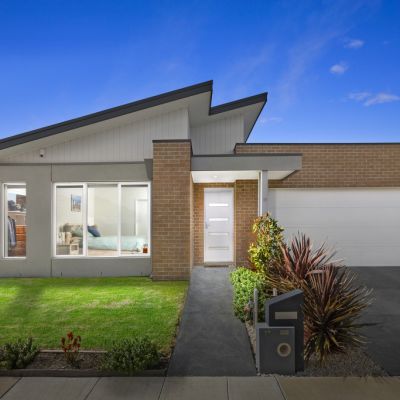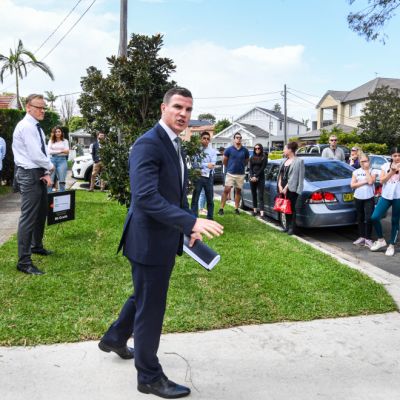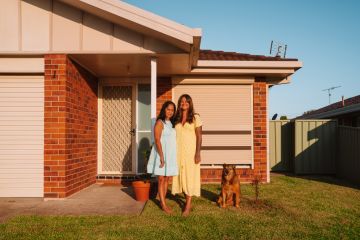Rental vacancy rate: Melbourne hits 4 per cent, other cities stabilise in September
Melbourne’s rental vacancy rate has more than doubled since this time last year, while Sydney’s figure has also blown out.
Some 4 per cent of rentals were vacant in Melbourne in September, well up from 1.8 per cent 12 months ago. The figure also worsened during the city’s strict stage four lockdown, from 3.9 per cent in August.
Tenants who lost work during the COVID-19-related recession have been moving out of rental properties and in with family and friends, while international students have not been able to come to Australia. But rental markets in other capital cities were returning to normal as they keep the virus at bay.
Domain senior research analyst Nicola Powell said Melbourne’s vacancy rate was the highest on Domain’s records.
“It shows the rental market in Melbourne is extremely disrupted,” she said. “It doesn’t come as a surprise really that Melbourne is forging a path on its own compared to other cities.
“While other cities are emerging from a lockdown, Melbourne was in stage four.”
The high rates were concentrated in the inner city, Dr Powell said, and other suburbs of Melbourne had actually benefited from the pandemic.
The highest vacancy rate, at 13.1 per cent, is in the Melbourne city SA3 area. But tenants face slim pickings in Cardinia in the outer south-east, at 0.4 per cent, and the beachside Mornington Peninsula at 0.5 per cent.
“We have a CBD that is struggling,” she said. “The CBD has definitely had a greater disruption.
“Mornington is very tight. It’s stark, two very different markets.”
Capital city rental vacancy rates – September 2020 |
|||||
| September 2020 | August 2020 | September 2019 | MoM ∆ | YoY ∆ | |
| Sydney | 3.4% | 3.4% | 2.9% | – | ↑ |
| Melbourne | 4% | 3.9% | 1.8% | ↑ | ↑ |
| Brisbane | 2.1% | 2.2% | 2.2% | ↓ | ↓ |
| Perth | 0.9% | 1% | 2.5% | ↓ | ↓ |
| Adelaide | 0.8% | 0.9% | 0.8% | ↓ | – |
| Hobart | 0.6% | 0.6% | 0.5% | – | ↑ |
| Canberra | 0.9% | 1% | 1.1% | ↓ | ↓ |
| Darwin | 0.8% | 1.3% | 3.6% | ↓ | ↓ |
| National | 2% | 2.1% | 1.9% | ↓ | ↑ |
| Source: Domain Note: The vacancy rate represents the portion of available, empty rental properties relative to the total stock of rental property. The rental vacancy rate is based on adjusted Domain rental listings and will be subject to slight revisions over time. |
|||||
Melbourne Asset Management’s Cameron Osborne agreed it was a two-speed market.
“We’ve got properties there that are advertised and no one’s applied for them for six months,” he said. “We have some that were advertised for $650 down to $400 and we still can’t find anybody for them.
“It’s very tough in the city whereas the outer suburbs are still doing the same sort of market.
“Melbourne city, Carlton, Southbank, there’s just nobody. Nobody coming across the border so no one’s leasing.”
Mr Osborne said it was an unenviable position to be an inner-city landlord during the pandemic, as the lack of international students and migration had slashed demand.
“You wouldn’t want to own an investment in the city at the moment,” he said. “They’ve been building all these extra properties and no one to move into them.
“The only thing is to meet the market. Get somebody into your property at whatever cost. The city is just shot. There’s nobody inquiring.”
Melbourne vacancy rates, by SA3 area
| Top 5 Highest Vacancy Rate | ||
| State | SA3 Area | Vacancy Rate (Sep-20) |
| VIC | Melbourne City | 13.1% |
| VIC | Stonnington – West | 7.1% |
| VIC | Stonnington – East | 5.7% |
| VIC | Boroondara | 5.2% |
| VIC | Whitehorse – West | 5.1% |
| Top 5 Lowest Vacancy Rate | ||
| State | SA3 Area | Vacancy Rate (Sep-20) |
| VIC | Cardinia | 0.4% |
| VIC | Mornington Peninsula | 0.5% |
| VIC | Maroondah | 0.5% |
| VIC | Knox | 0.5% |
| VIC | Casey – North | 0.6% |
Source: Domain
Nelson Alexander Carlton North and Fitzroy partner Martin Sizer said since stage four was eased and physical inspections allowed, there’d been a spike in interest.
“We are now treating every day of the week like a Saturday. We’ve spent the majority of this week setting up appointments and getting people through the property to get leases signed,” he said.
“I’d say from Carlton out we’re finding that people are interested. They’ve been waiting to see the properties.
“We still have a lot of stock so there are some where we’re trying to generate interest. But anecdotal feedback from the team is they’re optimistic it’ll be faster that we catch up. They thought it would take six months.”
Sydney’s rental vacancy rate has held at 3.4 per cent for the past two months, compared to 2.9 per cent in September 2019, but Dr Powell said the outlook was improving.
“Sydney remains stable over the month but the rental conditions are still much better for tenants,” she said. “They have fallen from peaks, which is to be expected, but they are higher than they were last year.”
Charter Keck Cramer research director Angie Zigomanis said Sydney was benefiting from better market conditions when compared to Melbourne but had still taken a couple of knocks.
“Sydney apartment and dwelling completions peaked a couple of years ago now so they’re starting to come off,” he said.
“The other thing with Sydney is it typically loses population to the other states. With the borders closed and with no overseas migration … the decline in tenant demand would be greater as well.”
Ray White Sydney’s Michael Lowdon said he was seeing some improvements.
“There are green shoots. We’ve had more inquiry over the past two weeks than we have had over the past six months,” he said. “If you want your property leased, you need to meet the market. If you drop the price you will get it leased.”
Dr Powell said other cities around Australia had benefited from border closures, with all tightening over the year and month.
“Perth is one to highlight. It’s another one of those signals that the Perth market has stabilised,” she said. “It has a tight vacancy rate now. It’s probably likely to see a bit of price growth.
“Adelaide and Canberra, they have been less impacted in terms of their markets. The change in demand for those areas will be less great.”
The Brisbane rental market appears to have recovered from oversupply issues in years gone by, Dr Powell said.
“It’s declined year on year. The rate in Brisbane was much higher than Melbourne this time last year,” she said. “I think even though it was impacted it’s improved.”
We recommend
States
Capital Cities
Capital Cities - Rentals
Popular Areas
Allhomes
More










